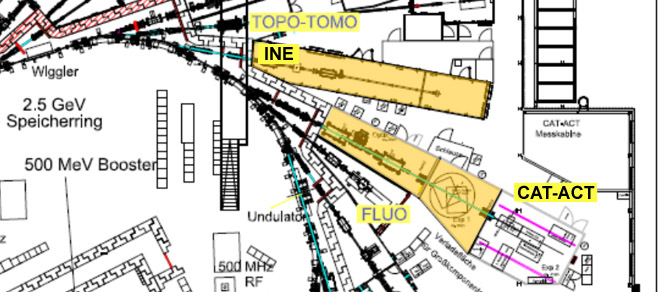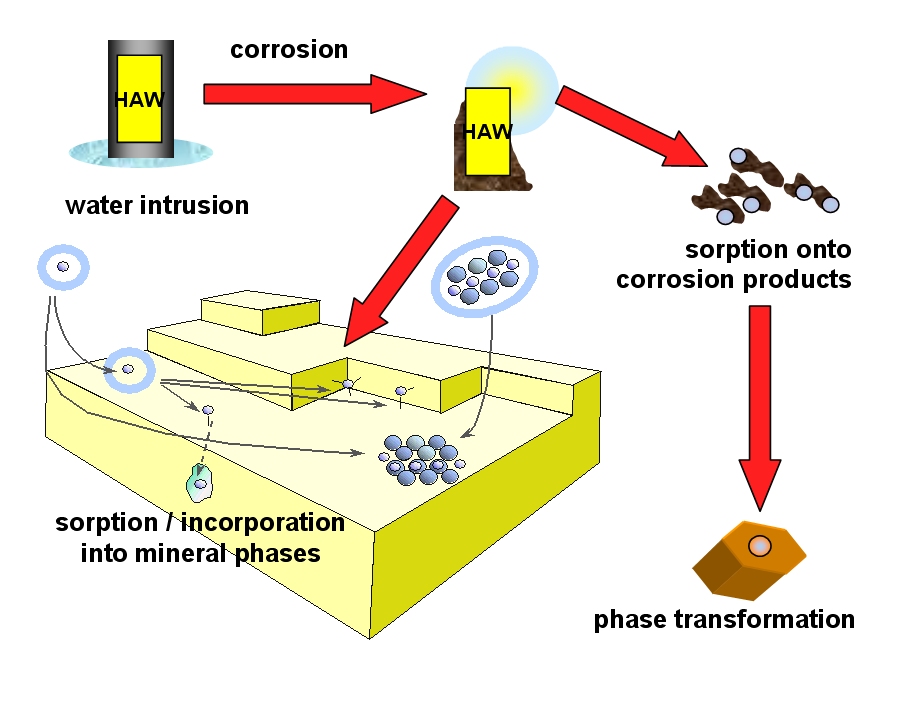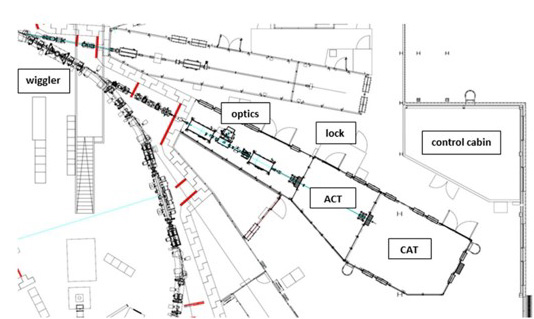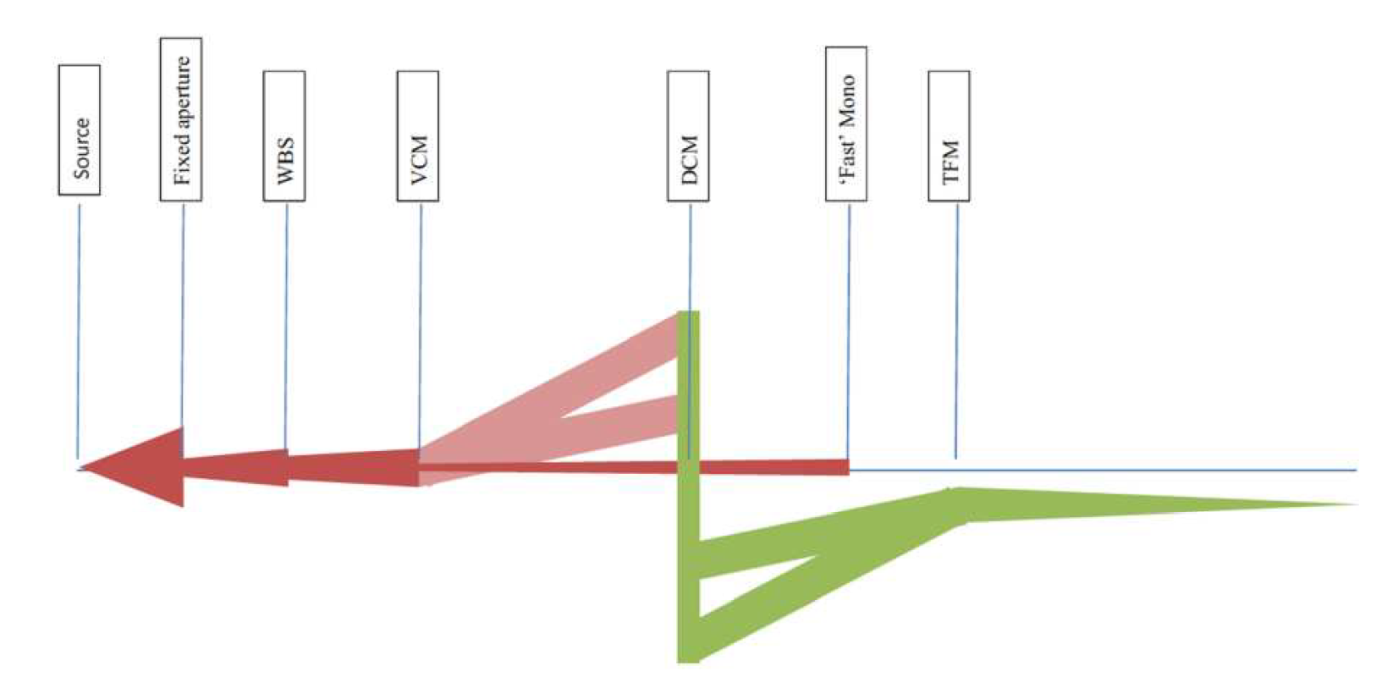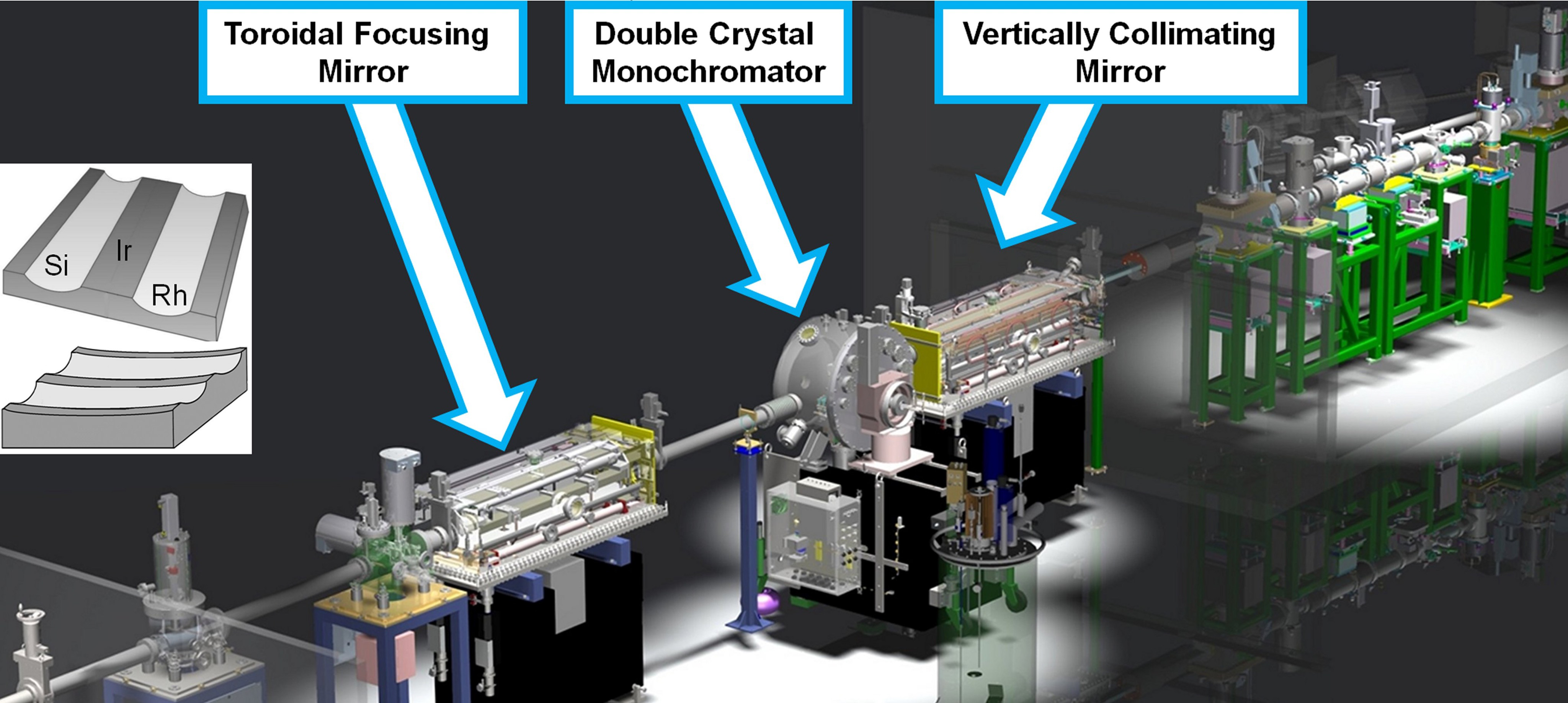Background
 |
The INE Beamlines (INE-Beamline and the ACT station at the CAT-ACT Beamline) at the KIT-synchrotron are dedicated to actinide research with X-ray spectroscopic techniques. Both are operated by the Institute for Nuclear Waste Disposal (INE).
|
|
Schematic sketch visualizing some of the actinide mobilization / retention processes possibly following actinide release from corroded HAW. |
Research and development at INE are largely aimed at long term safety assessment of proposed deep geological repositories for high-level, heat producing nuclear waste (HAW) disposal. To ensure sound safety assessment, a molecular understanding of processes determinant in the fate of radionuclides, notably the actinides, and thermodynamic quantification is essential. Of central importance in such investigations is determination of actinide speciation (i.e., their chemical and physical form). X-ray spectroscopic methods have proved to be valuable tools for actinide speciation research. Investigations on non-fissile radioisotopes up to 106 times the legal exemption limit and fissile radioisotopes (Pu-239, U-235) up to 200mg, contained within two layers of protection, are possible. The synchrotron-based activities at the INE-Beamline are embedded in INE’s in-house research, thereby allowing a combination of analytical and instrumental methods, notably laser techniques and microscopic methods. |
In situ X-ray spectroscopic investigations on radioactive samples are routinely performed at the INE Beamlines for studying, e.g., actinide containing solid-water interface chemical reactions, not possible at other facilities. A special protocol for working with radioactive samples at both INE beamlines exists and is supervised by INE’s own radiation protection officers. The unique aspect of the INE Beamlines is its close proximity to INE’s active laboratories on-site KIT north campus. The design is for a multi-purpose beamline, where a number of methods are possible on one and the same sample.
The INE Beamlines serves three general functional areas:
- Research = user facility (INE in-house, HGF NUSAFE program, via strategic
research cooperation with KIT-INE)
- Education and dissemination (maintaining nuclear competence)
- Development & upgrades (adaption of methods, serving user needs)
Layout
Layout of the CAT-ACT facility with optic hutch adjacent to the storage ring wall, two in-line experimental stations and separate control cabin in the ANKA east hall extension.
Schematic beam path (not to scale) from the source (left) to the experiments (right)
CAT-ACT optical components designed and manufactured by FMB Oxford (Oxford, United Kingdom). From right to left: frontend components (intensity absorber, X-ray beam position monitor, white beam slit), collimating mirror, double crystal monochromator, diagnostics module, toroidal focusing mirror, beam shutter separating ACT hutch from optics section. Inset: focusing mirror coating scheme.
Experiment
Detectors
| Detector | Type | Main specs |
| Fluorescence |
8 element HPGe array detector (Mirion Technologies, Canberra SAS)
Ketek 1 El. SDD AXAS-M Vitus H150 (Ketek GmbH, Germany)
Vortex 1 El. VX 60 SDD (Hitachi, USA) |
140 eV at 6 keV (shaping time 500ns);
160 eV at 6 keV (shaping time 760ns); |
| Absorption |
3 ionization chambers (Poikat / Hamburg low-energy set-up with single entrance window (Oken Ltd. ionization chambers, Japan) |
window 12.5 or 25 µm KAPTON, FEMTO low current amplifiers DLPCA-200 ionization chambers and sample chamber form windowless volume – gas tight insertion of SDD into sample chamber for high quality fluorescence spectra |
Sample holder (HUBER stage, combined with HRXES spectrometer):
| Movement | Range |
| z stage | 90 mm; 50 nm/step |
| phi circle | 360°; 0.001°/step |
| x stage | 80 mm; 100 nm/step |
| y stage | 80 mm°; 100 nm°/step |
|
Experimental setup for XAFS and XES measurements at the ACT station: The photo shows the new NEXT spectrometer setup with the front door of the He containment opened. The HRXES spectrometer is brought to 180° backscattering position to allow for the installation of the standard XAFS and XRF setup. |
NEXT spectrometer setup using the HRXES configuration: The photo shows the 90° position with 1 m Rowland circle geometry. |
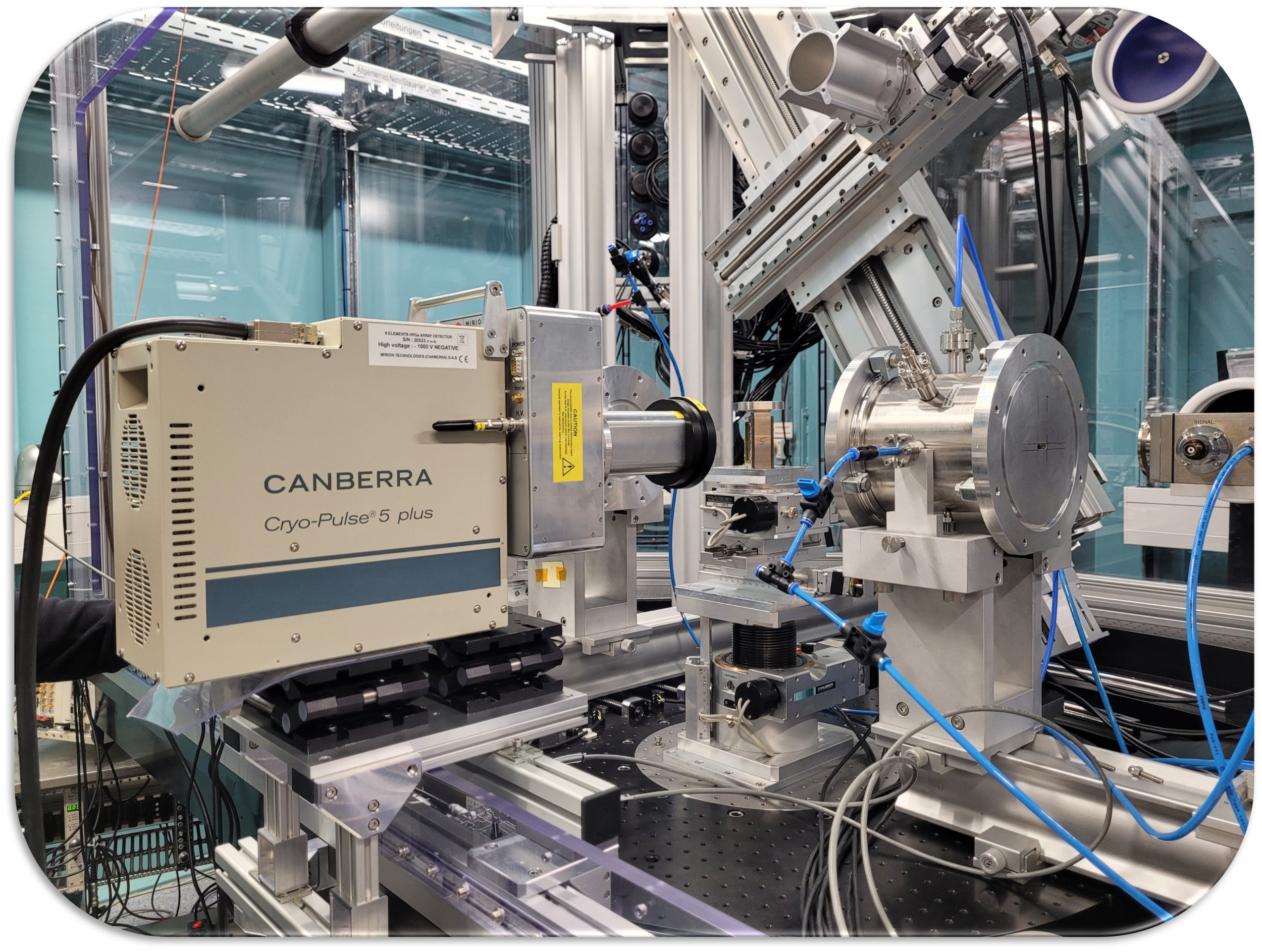 |
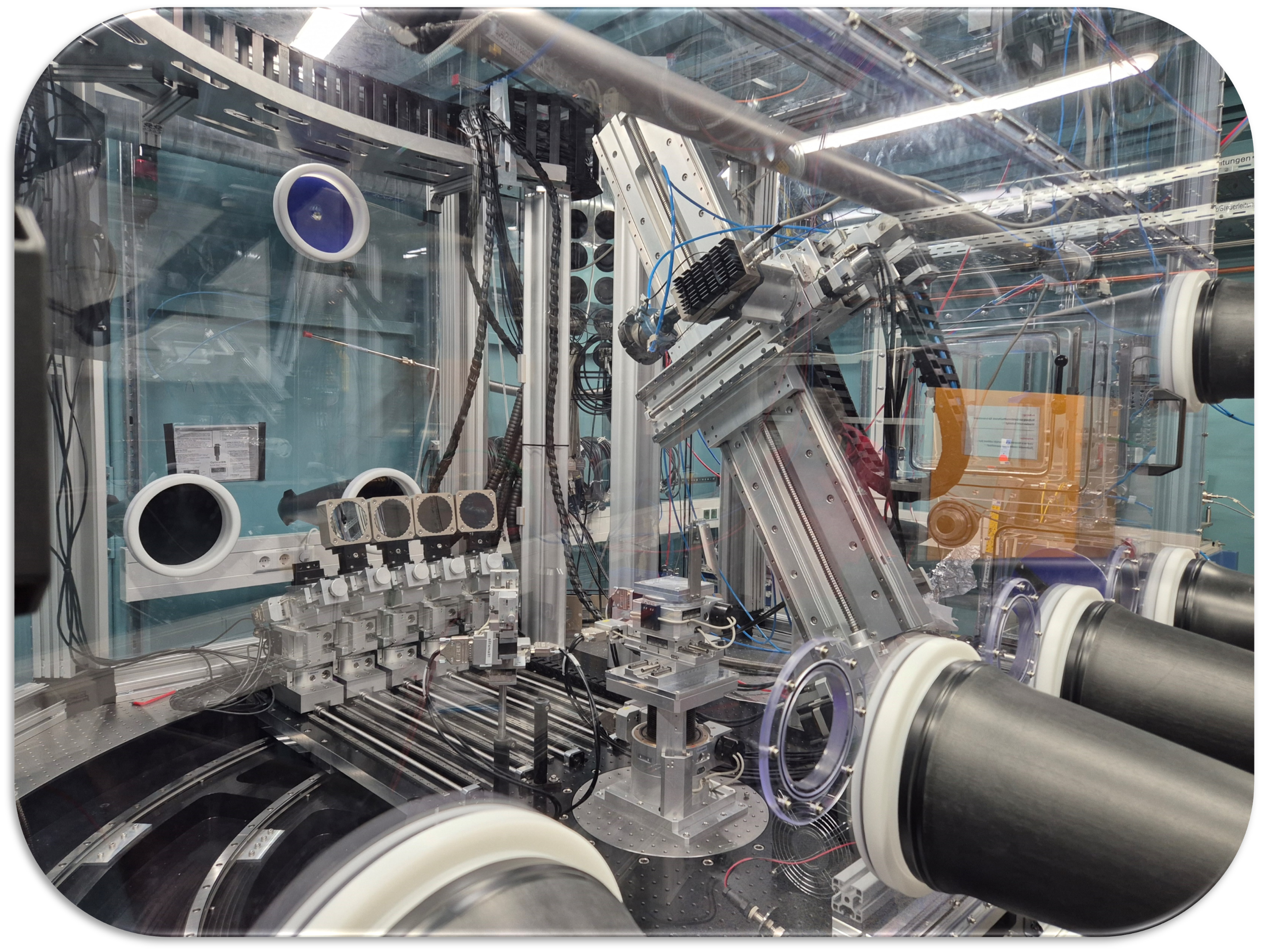 |
Sample environment
• Standard holder for transmission and fluorescence measurements of radioactive and non-radioactive samples, e.g., 400 µl and 2 ml PE-tubes, pellets.
• Liquid sample cell for the investigation of redox labile systems under electrochemically controlled conditions
• Environment: atmosphere, inert gas (existing supplies: He, N2, Ar)
• Liquid N2 cryostat for low temperature measurements, sample under vacuum
- cryo samples holder specially adapted* for double containment
*see Schacherl, B. et al. 2022
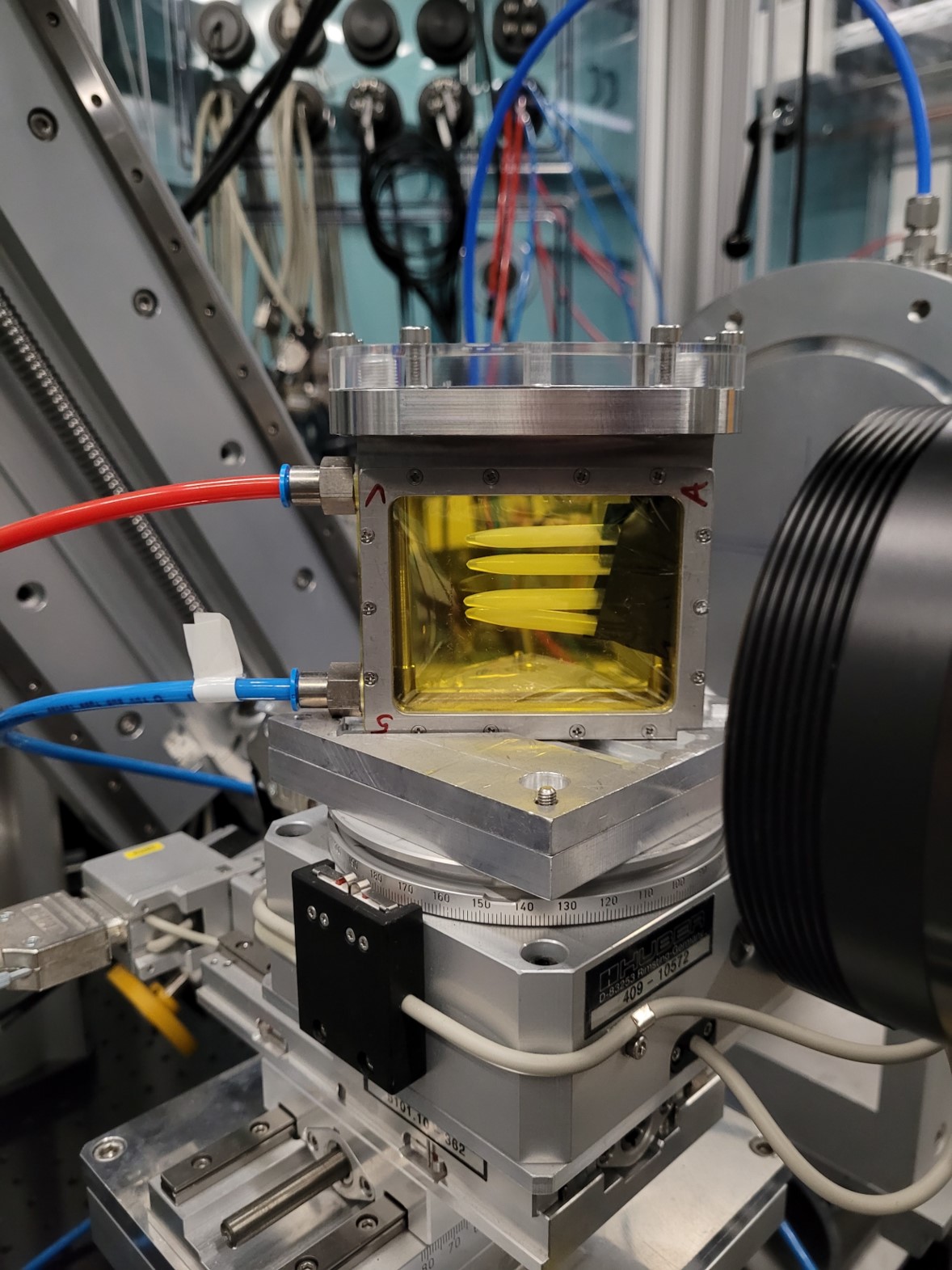
|
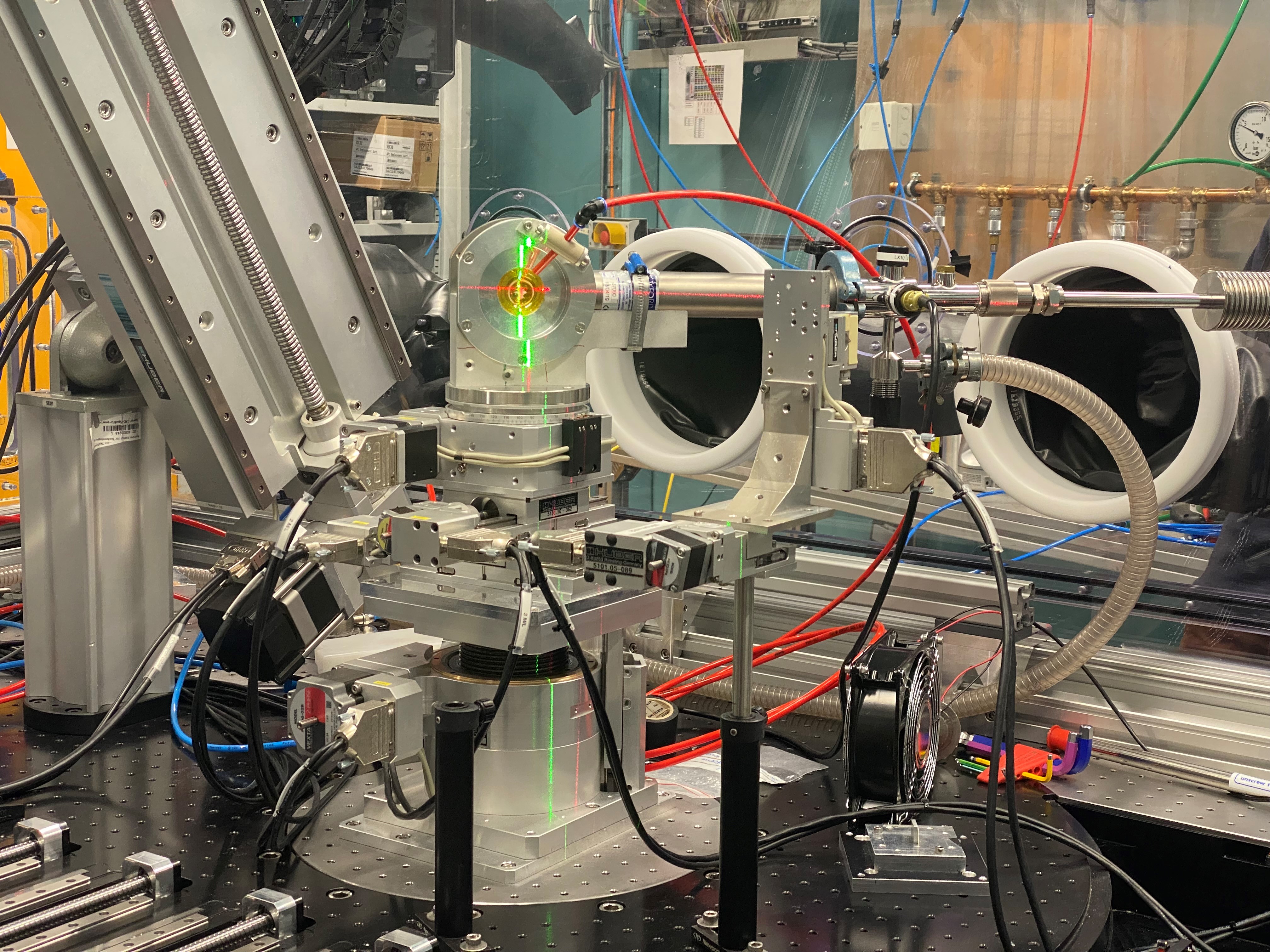
|
Methods
| XAFS | characterization of bulk species by XANES/EXAFS |
| XAFS/XRD | characterization of phase - pair distribution relationships |
| XRF | measure elemental concentrations |
|
High energy resolution (Johann spectrometer) |
HRXES: high resolution X-ray emission spectroscopy - HR-XANES - VB-RIXS covering M and L edges of actinides |
|
Combination of methods |
X-ray method combined with other techniques, e.g., laser, raman, UV/VIS spectroscopy |
Characteristics
| Radioactive work | Infrastructure and licensing for activities 106 times the legal exemption limit as well as Pu-239 and U-235 up to 200mg. |
| Energy range | 3.4 keV - 55 keV (wavelength range: 3.6 – 0.2254 Å) |
| Source | 2.5 T superconducting multipole wiggler (Ec=10.2keV, K=11.2, 15mm vacuum gap, 4.7kW radiated power) |
| Optics |
• fixed-exit DCM with LN2 cooled crystals and piezo-driven detuning / feed-back system for second crystal, direct drive Bragg axis goniometer with maximum speed of 4°/s and exchangeable crystal pairs Si(111) and Si(311)
• Diagnostic modules |
| Beam size at sample position |
~1mm × 1mm (standard beam size with mirror) mirrorless operation above 45keV |
| Flux at sample position | ~1011 photons/s/100mA at 20keV, Si(111) |
| Experimental set-up/ sample positioning |
• Standard sample holders for radioactive samples, other dimensions can be accommodated |
| Experimental set-up/ detectors | • Ionization chambers for nominally high energies (transmission mode) • Ionization chambers for nominally low energies (Oken Ltd, Japan) • XRD-setup using area detector (sCMOS 37.7MP, Photonic science) • 8 element HPGe array detector (Mirion technologies, Canberra SAS) • Ketek 1 El. SDD AXAS-M Vitus H150 (Ketek GmbH, Germany) • Vortex 1 El. VX 60 SDD (Hitachi, USA) • Fully digital fluorescence detector read-out (XIA Xmap) |
Further detailed information is available in:
Zimina, A.; Dardenne, K.; Denecke, M. A.; Doronkin, D. E.; Huttel, E.; Lichtenberg, H.; Mangold, S.; Pruessmann, T.; Rothe, J.; Spangenberg, Th.; Steininger, R.; Vitova, T.; Geckeis, H.; Grunwaldt, J.-D.; CAT-ACT—A new highly versatile x-ray spectroscopy beamline for catalysis and radionuclide science at the KIT synchrotron light facility ANKA, Review of Scientific Instruments 2017, 88, 113113.
| Name | Tel. | |
|---|---|---|
| Dardenne, Kathy | +49 721 608-26669 | dardenne ∂does-not-exist.kit edu |
| Prüßmann, Tim | tim pruessmann ∂does-not-exist.kit edu | |
| 1 weitere Person ist nur innerhalb des KIT sichtbar. | ||
| Name | Tel. | |
|---|---|---|
| Dardenne, Kathy | +49 721 608-26669 | dardenne ∂does-not-exist.kit edu |
| Prüßmann, Tim | tim pruessmann ∂does-not-exist.kit edu | |
| 2 weitere Personen sind nur innerhalb des KIT sichtbar. | ||

